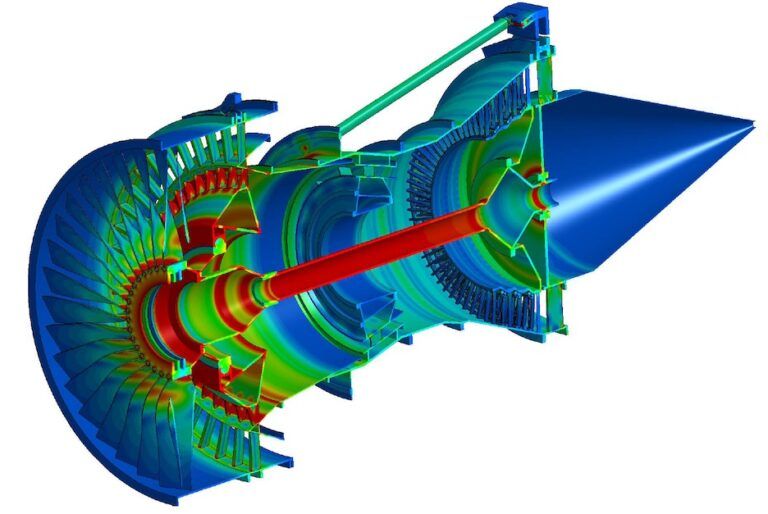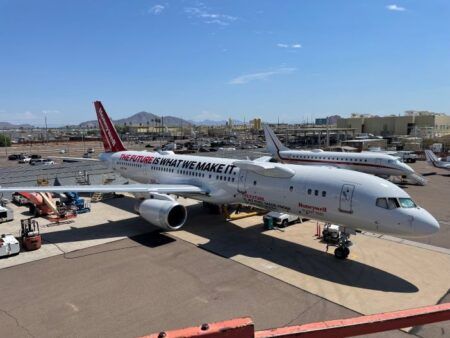Rolls-Royce has worked with simulation software provider Ansys and Intel to reduce the time it takes to develop thermo-mechanical models of gas-turbine engines from more than 1,000 hours to less than 10.
As part of the program Rolls-Royce used Ansys’ simulation and Intel’s high-performance computing (HPC) technologies to accelerate engineering solve times, reduce operational power consumption, and create virtual prototypes of its gas turbine engines up to 100X faster.
The company also uses Ansys multiphysics simulation software and Intel HPCs in R&D with digital twins to improve engine design for more sustainable and climate-neutral drive, propulsion, and power generation.
Todd Simons, HPC expert at Rolls-Royce said, “We are committed to reaching net-zero within our own operation by 2030 and to enabling the sectors in which we operate to reach net-zero by 2050.
“To achieve these goals and reduce emissions successfully, digital transformation is necessary. We believe cutting-edge technologies from Ansys and Intel will enable us to develop smarter, cleaner, and safer engines to power a more sustainable future for aviation while reducing our operational carbon footprint.”
Ansys helps Rolls-Royce reduce memory requirements, accelerate performance, and improve parallel efficiency. Using the Intel oneAPI Math Kernel Library MKL, Ansys LS-DYNA enables simulations to consume less memory and run orders of magnitude faster, which conserves power and energy consumption.
Rolls-Royce also uses digital twin technology to create high-fidelity designs and virtual prototypes. By incorporating simulation and digital twins during development engineers can gain insights that help to design more efficient propulsion systems.
Shane Emswiler, senior vice president of products at Ansys said, “We are proud to collaborate with Rolls-Royce and Intel to leverage the power of simulation and related technologies to develop cleaner engines, combat climate concerns, and reduce emissions.
“We are confident that Ansys’ simulation portfolio and Intel’s compute power will equip Rolls-Royce engineers to impact the future of aviation positively.”
The program was also supported by the computing resources at the Oak Ridge Leadership Computing Facility in Tennessee, USA , Hewlett Packard Enterprise and researchers at the NCSA (National Center for Supercomputing Applications) at the University of Illinois Urbana-Champaign.





